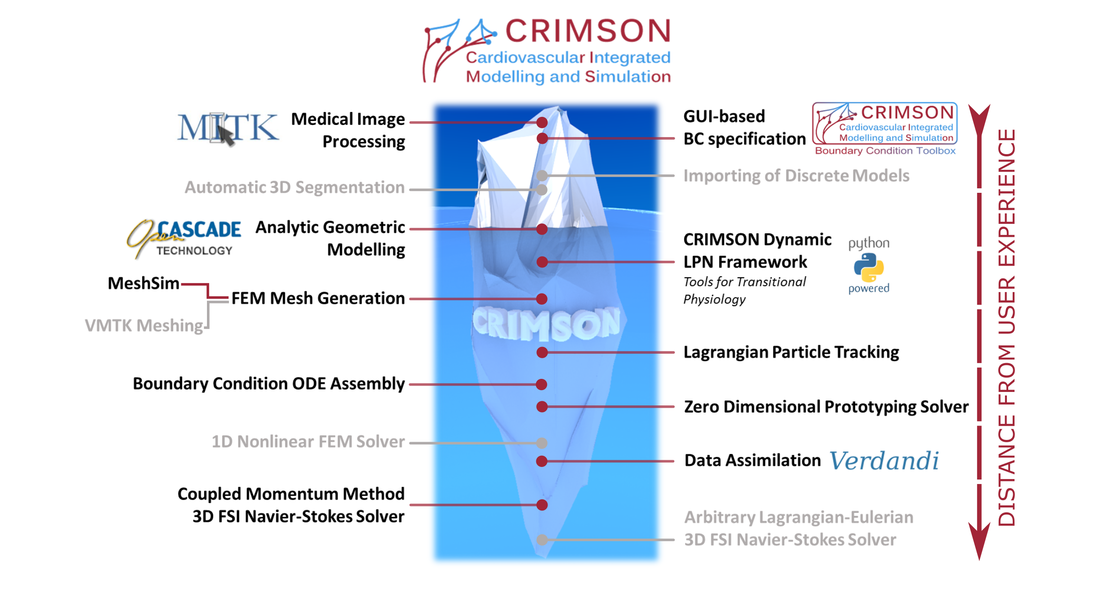
Capabilities
Below are some of the key features of the software
Coupled Momentum Method for Deformable Vessel Walls
Use the Coupled Momentum Method to simulate 3D Navier-Stokes haemodynamics with vessel wall motion during the cardiac cycle with spatially-varying vessel wall properties.
Data Assimilation
Exploit rich patient data by automatically determining the appropriate boundary condition and vessel wall parameters required to reproduce your recordings.
GUI-Based BC Specification
Create custom lumped parameter network (LPN) boundary condition models with the user-friendly drag-and-drop interface, attach them to the geometric model at the appropriate outlets, and create closed-loop models.
CRIMSON Dynamic LPN Framework
Model transitional physiology and control using arbitrary on-the-fly LPN adjustment scripts written in Python, based upon simple rules or systems of differential equations of your choice.
Lagrangian Particle Tracking
Examine blood transport phenomena by simulating particles as they are carried in the blood stream.
Zero-Dimensional Prototyping
Examine the impact of your parameters in a fast, low computational cost environment before spending your High Performance Computer allocation on Navier-Stokes simulation.
Discrete Model Support
Import your externally-generated discrete surfaces and continue the CRIMSON workflow from the meshing step.
Scalar Transport Simulation Capabilities
The ability to simulate an arbitrary number of scalar species in the blood stream.